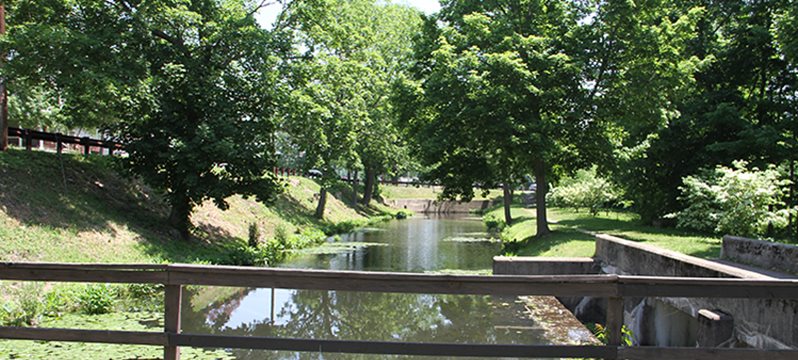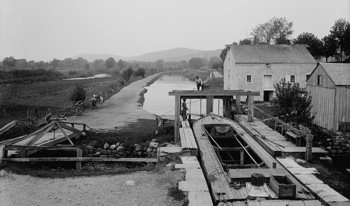
This study identifies a continuous route of 111 miles for development of a world-class greenway, including pedestrian and bicycle facilities, along or close to the route of the historic Morris Canal. The greenway route makes connections between all the remaining segments of the original canal towpath. When completed the greenway will provide residents of northern New Jersey a facility for recreation and active transportation. It will also provide a connections between business districts along the route.
The study celebrates and preserves the rich history of the Morris Canal that was built in the early 1800s and operated for about a century. The Canal facilitated the transportation of coal, iron-ore, agricultural and industrial products from Delaware River in the west to Hudson River in the east. An engineering marvel of its time for containing locks, inclined planes and pedestrian bridges, the canal promoted and shaped the economic development of northern New Jersey until railways put it out of business.
The study identifies a list of 76 projects for start of implementation in the short- to medium (within 10 years) and long term (after 10 years), contingent upon funding availability. The short-to-medium term projects only require sign installation, pavement striping or minor surface enhancement and larger shared use path construction. The long-term projects will require property acquisition and/or significant new infrastructure like a bridge. Some projects already have dedicated funding and hence are expected to be built early in the development process.
The study provides recommendations regarding the different types of path to be built in different conditions (urban, suburban and rural) that the canal traverses. For instance, a canal-side shared use path is appropriate for rural areas whereas an on-road facility is appropriate for urban areas due to lack of space. The details of the different types of paths and amenities to be embedded in them is present in the “Design Guidelines” appendix. Applying the design guidelines consistently to signage, markings, fonts and color palette will ensure a unifying and recognizable look to the greenway for the public.
The study also provides recommendations regarding organizational structure and marketing and branding that will increase the efficiency of building the greenway. Among the various organizational structures explored in the study; creating a non-profit with a board, staff, supporting organizations and stakeholders has emerged as the best option. One of the immediate tasks of the leading organization will be to implement the 24 months branding and marketing plan of the study. This will help to gain and enhance public awareness and government support necessary for building the greenway in the coming decades.
The study began in the summer of 2017; emerging out of the enthusiasm of the Morris Canal Working Group (MCWG). The study was supported by extensive stakeholder input, including from MCWG members, the Canal Society of New Jersey, and officials from state agencies, counties and municipalities. It was funded and led by NJTPA with support from a consultant team of NV5, Arterial, Heritage Strategies and SWELL.
 Morris Canal Working Group
Morris Canal Working Group
The NJTPA formed the Morris Canal Working Group in 2012 to bring together stakeholders in an open forum to coordinate current and future plans for this important transportation resource. Visit the working group’s website at MorrisCanalGreenway.org for information about the canal, various studies, events and more.
If you have any questions about the study contact Lois Goldman, Director, Long Range Transportation Planning, NJTPA at
[email protected].